Despite your best effort, accidents happen. Losing a MacBook or seeing your Mac simply die for no reason. You can take the sting out of any mishap if you have a backup.
Much like flossing, backing up your Mac is a regular practice that is crucial to your technological health. While many know it is vital, not many people remember to do so regularly.
Below is an exploration of when backups can be especially helpful to you as well as a step-by-step guide to creating a backup of your Mac and MacBook computer.
Looking to back up your PC? Click here.
Table of Contents:
When you need to backup

Though ideally, you are regularly backing up your computer. For the rest of us, there are some key moments to back up your computer, such as:
- Before updating software programs such as operating systems
- Before your computer has been infected with a virus or malware
The reason for these key moments is that it gives you the ability to protect your data before you need to preserve it. You may need to reformat your computer to get it back to working condition. If something goes wrong in the process, you will have a copy of your data safely ‘tucked away’ via a backup.
Where to back your data up: The Cloud vs. External Drive
Before I dive into the ways to back up your data, you will need to have a location to save your data.
You’ve got two paths here. The choices are fairly simple: in the cloud or on an external drive. Keeping a backup in the cloud somewhere other than in your real possession, or backing to an external drive that you control. I’ve long ago lost trust in storing anything valuable and meaningful on someone else’s cloud. I still use cloud storage, just not for what’s sensitive and truly important. My assumption is that anything you store on a cloud system is not private.
If you are considering these options, be sure to read more here:
- Options for Cloud and Hard drive storage
- How to determine how much storage is needed to back up your computer
How to back up Your Mac
Already included in most recent Mac operating systems, Time Machine creates versions of your Mac: daily, weekly, monthly, etc.
How to backup with Time Machine
Time Machine saves all your settings, data, and apps from your Mac. And unlike most other backups, Time Machine only backs up changes you’ve made since the last time you ran it so the process is quicker than traditionally backing up data. The benefit of having versioned backups is that it not only saves your ‘hide’ when something goes wrong with your Mac, but it prevents you from user errors. If you accidentally delete or alter a file and need to restore to its original or older version, you can.
Below are the step-by-step instructions on how to use Time Machine to back up your Mac:
- Connect your external drive with the Time Machine backup to your Mac
Notes: Make sure the drive is correctly formatted for the current Mac you’re using. If you’re planning on migrating your Mac’s data to another Mac device, make sure you format the drive that is compatible with the Mac you intend to transfer the data to
- Open System Preferences in your Dock
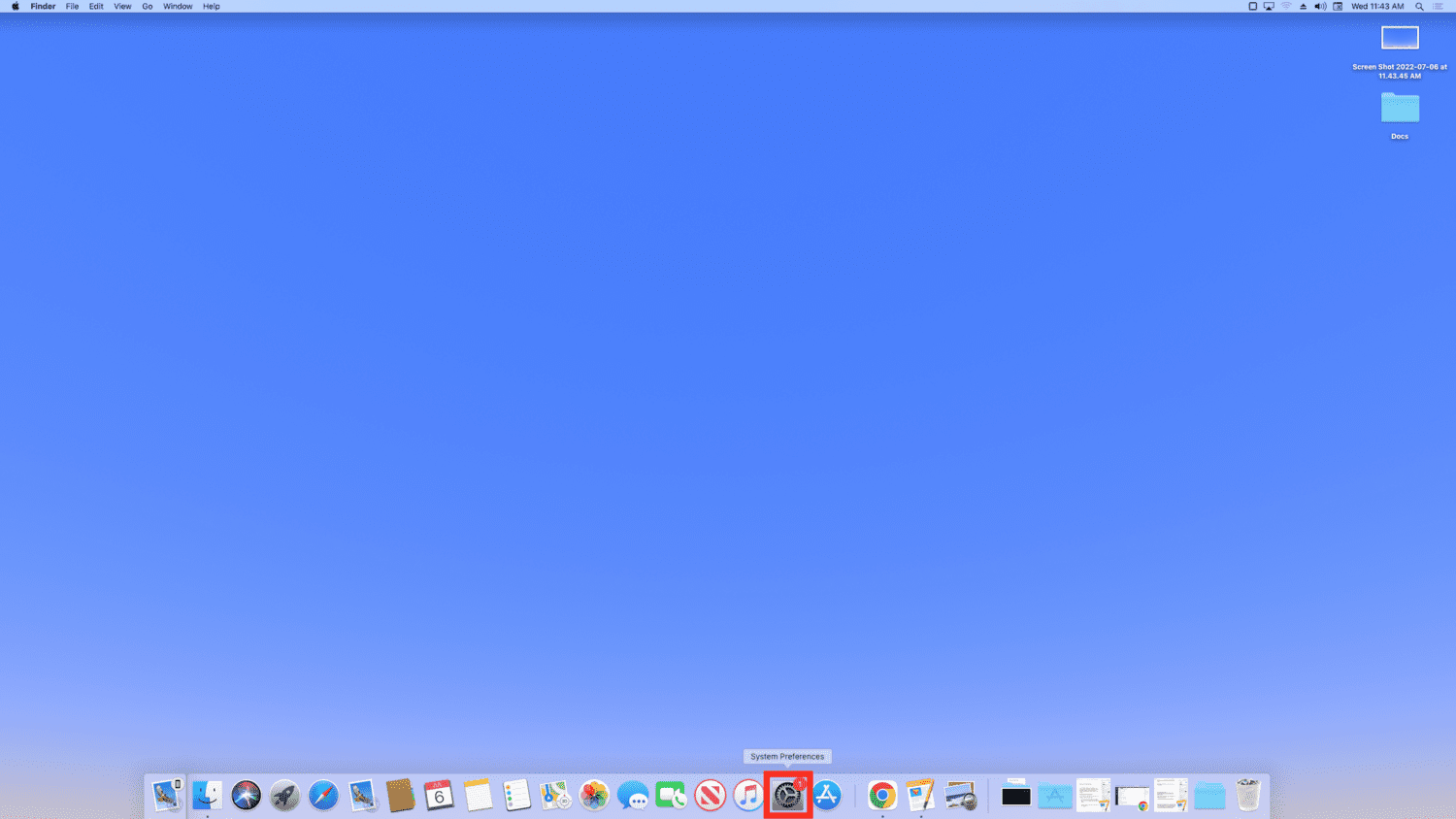
- Click Time Machine

- Click Select Backup Disk
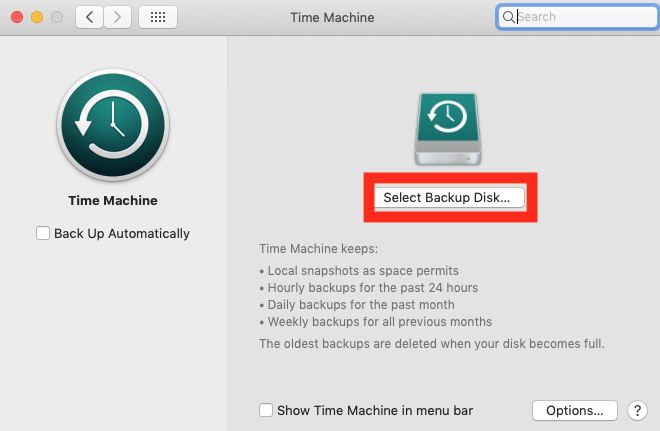
- A window will pop-up with a list of external drives
- Select the drive you want to use for your backup
- Click Use Disk

Please note the initial backup using Time Machine will usually take the longest.
How to restore your Mac
How to restore individual files or folders with Time Machine
- Connect the drive with your Time Machine backup to your Mac
- Open the folder where the item you want to restore resides (example: Documents)
- From the desktop, click the Time Machine icon on the Menu bar
- Select Enter Time Machine
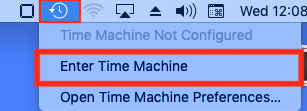
- Another screen pop-up showing the timeline of your backups of that folder or file, which you can navigate chronologically using the arrows

- Once you’ve found the version you want, click Restore and it should appear in its original location
How to set up automatic backups with Time Machine
Below are step-by-step instructions to help set up automatic backups with Time Machine. As long as your external drive is connected to your Mac, it will create hourly, daily, weekly and monthly backups once you select automatic backups with Time Machine. It will continue to backup every time the external hard drive with the Time Machine backup is connected. It will erase the older backups as space runs out on the external hard drive used for these backups.
- Connect your external drive with the Time Machine backup to your Mac
- Open System Preferences in your Dock
- Click Time Machine
- Tick the box that says ‘Back up Automatically’
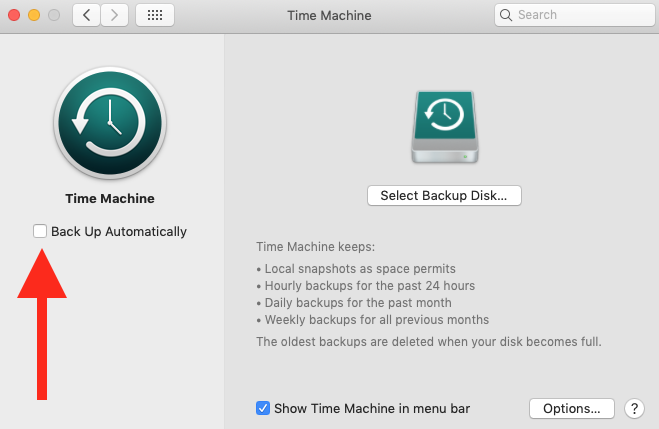
- In the next window, select the external drive you want to use for these automatic backups with Time Machine
- Click Use Disk
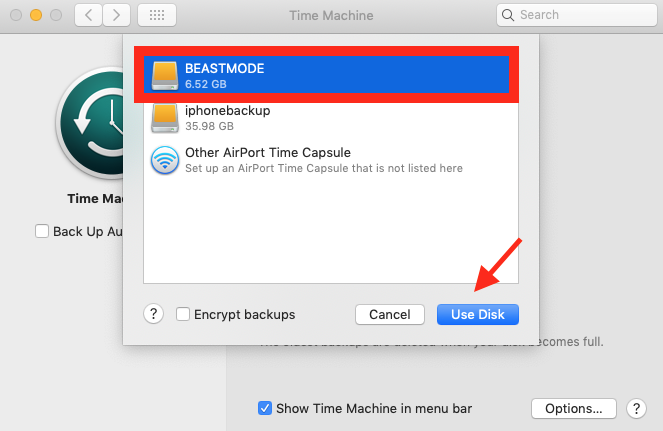
How to restore your Time Machine backup with Migration Assistant
Migration Assistant is a program that comes standard with most MacOS. It enables users to transfer user accounts, computer settings, apps and data from one Mac to another.
- Connect the drive with your Time Machine backup to your Mac
- Go to the Applications folder on your dock
- Click Utilities
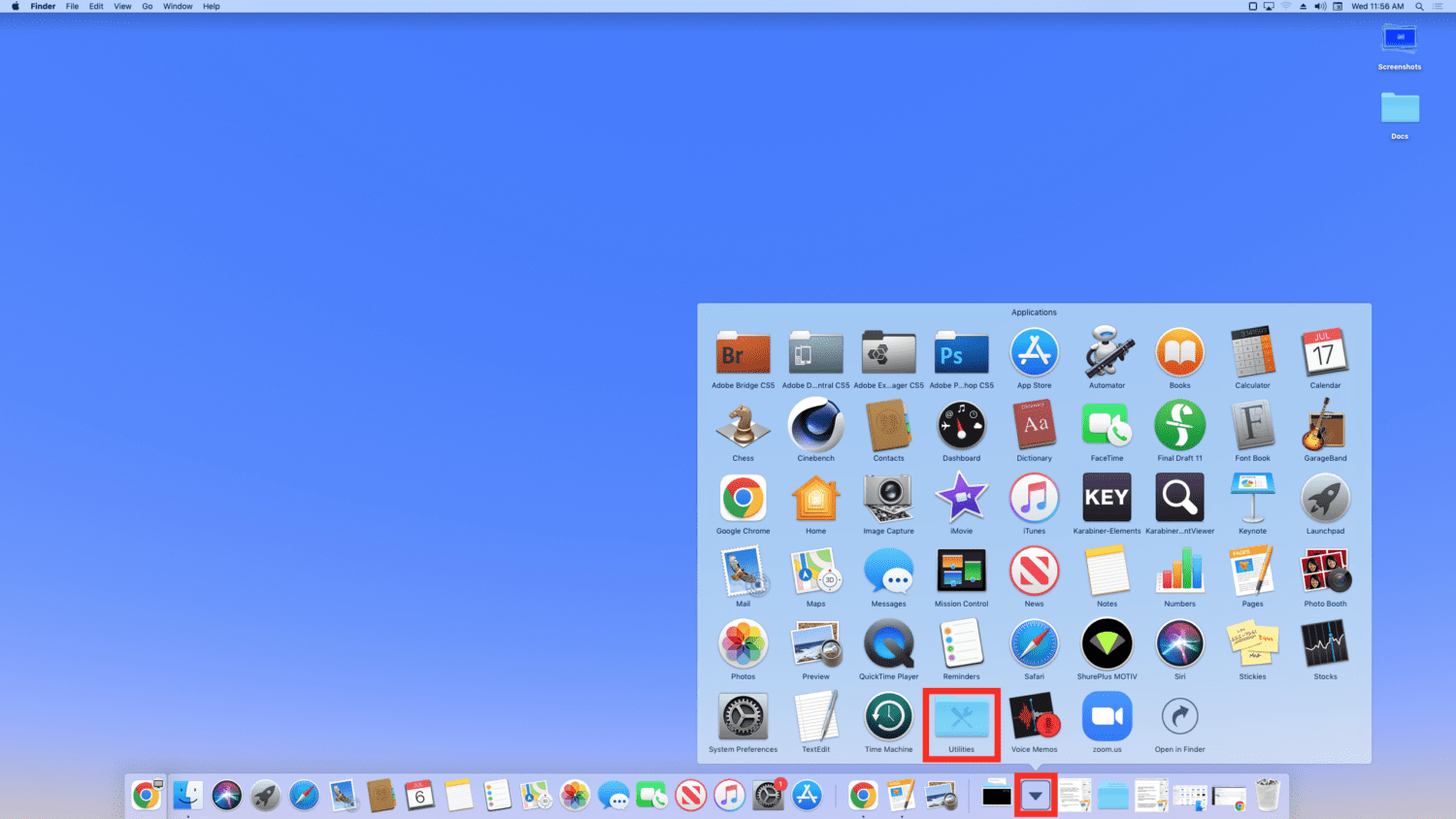
- In the Utilities folder, click Migration Assistant
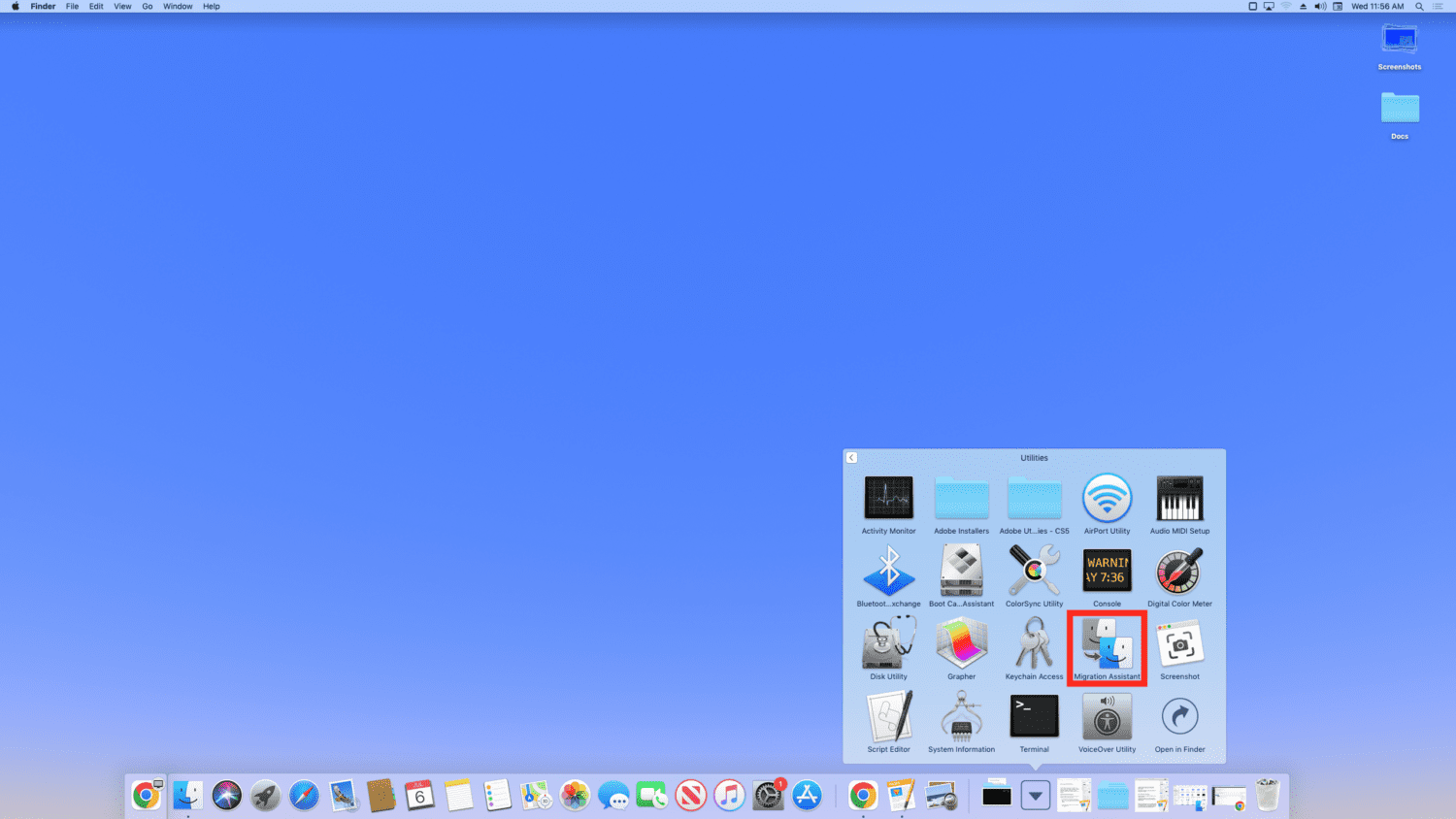
- You may be prompted for your User Name and Password. If so, enter both to proceed
- Select From a Mac, Time Machine Backup or Startup disk
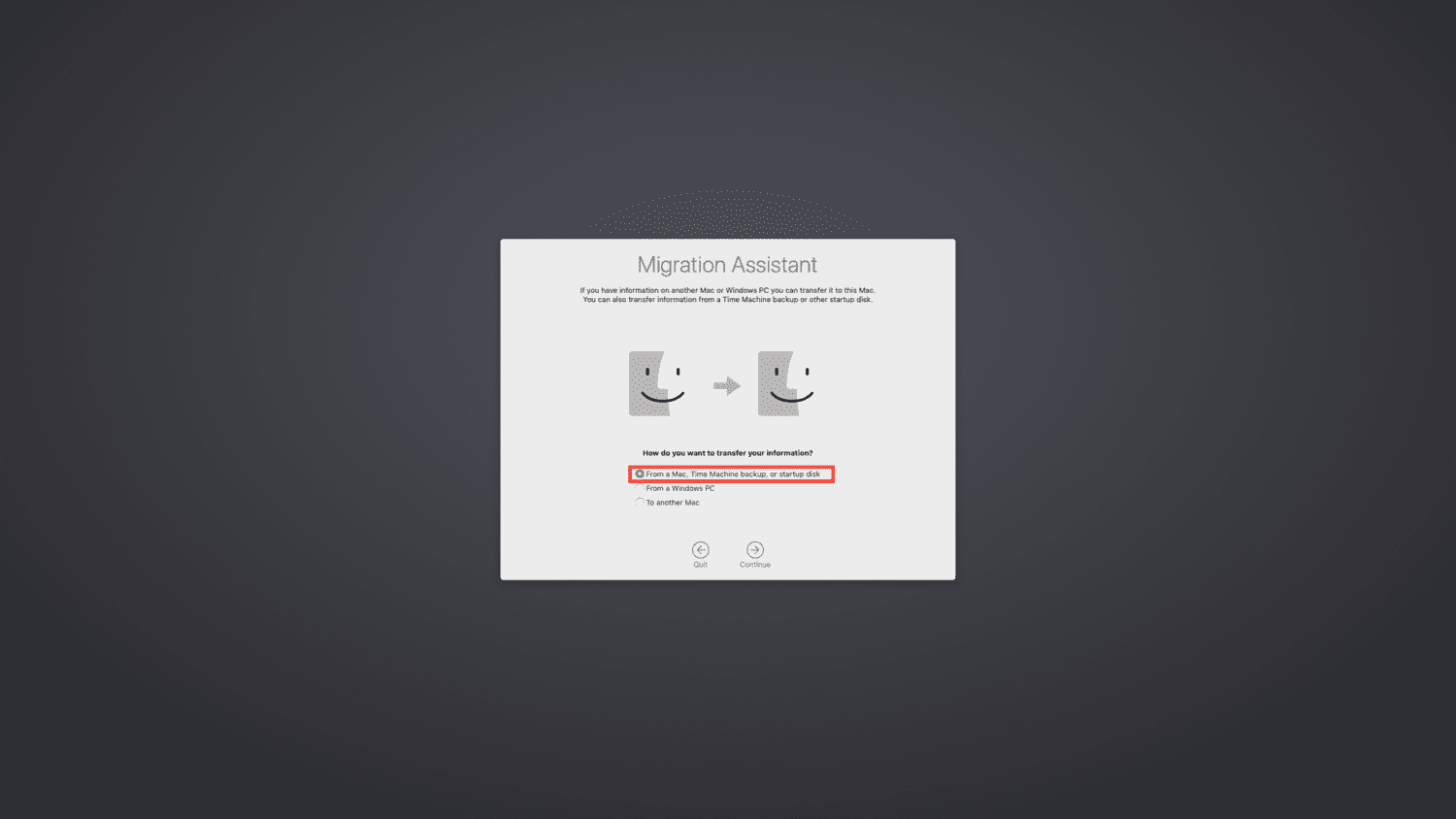
- Icons of available drives will populate, select the drive you used for the Time Machine Backup
- Click Continue
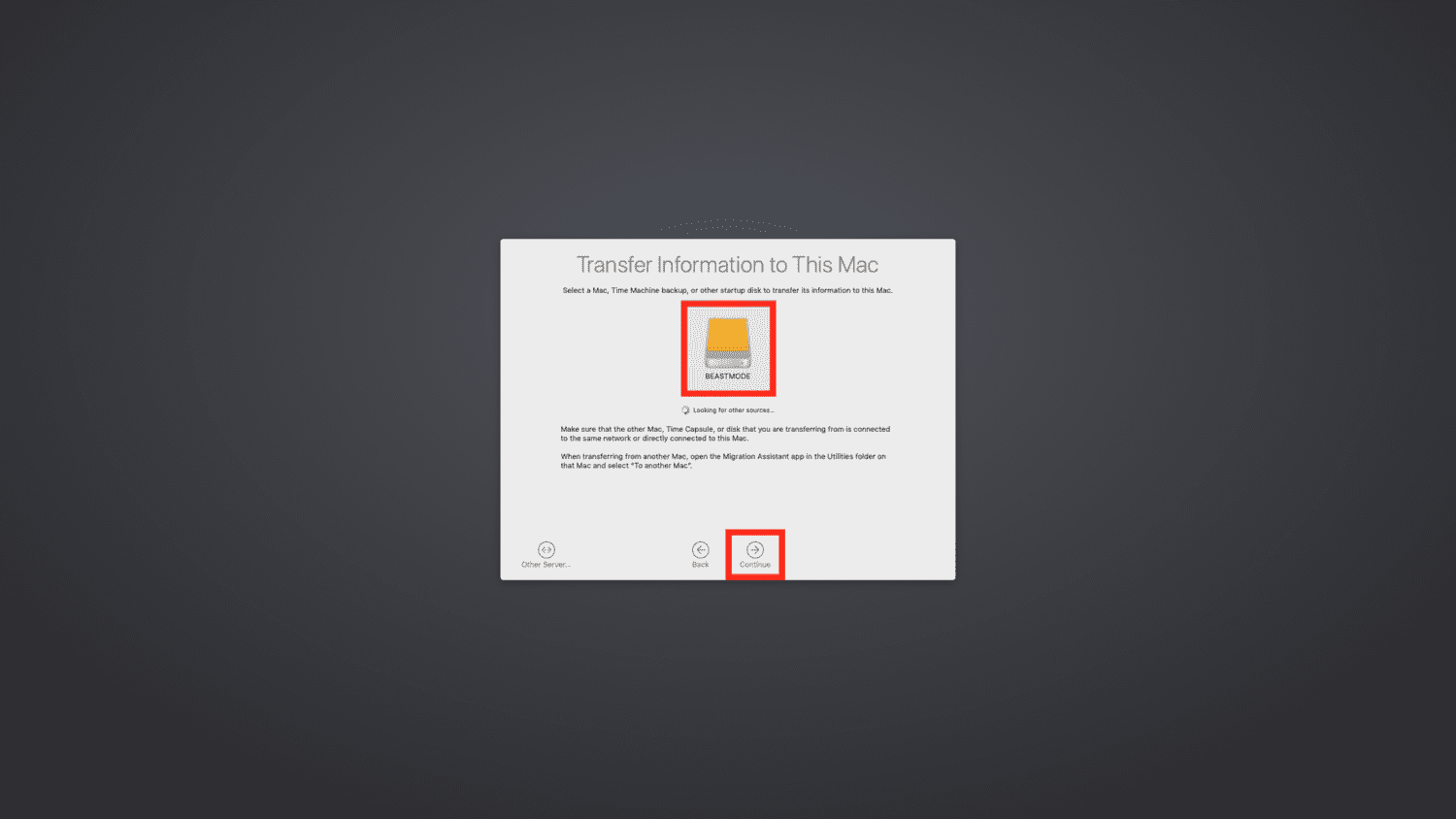
- Select the information to transfer (folders, files and/or user accounts)
- Click Continue to transfer
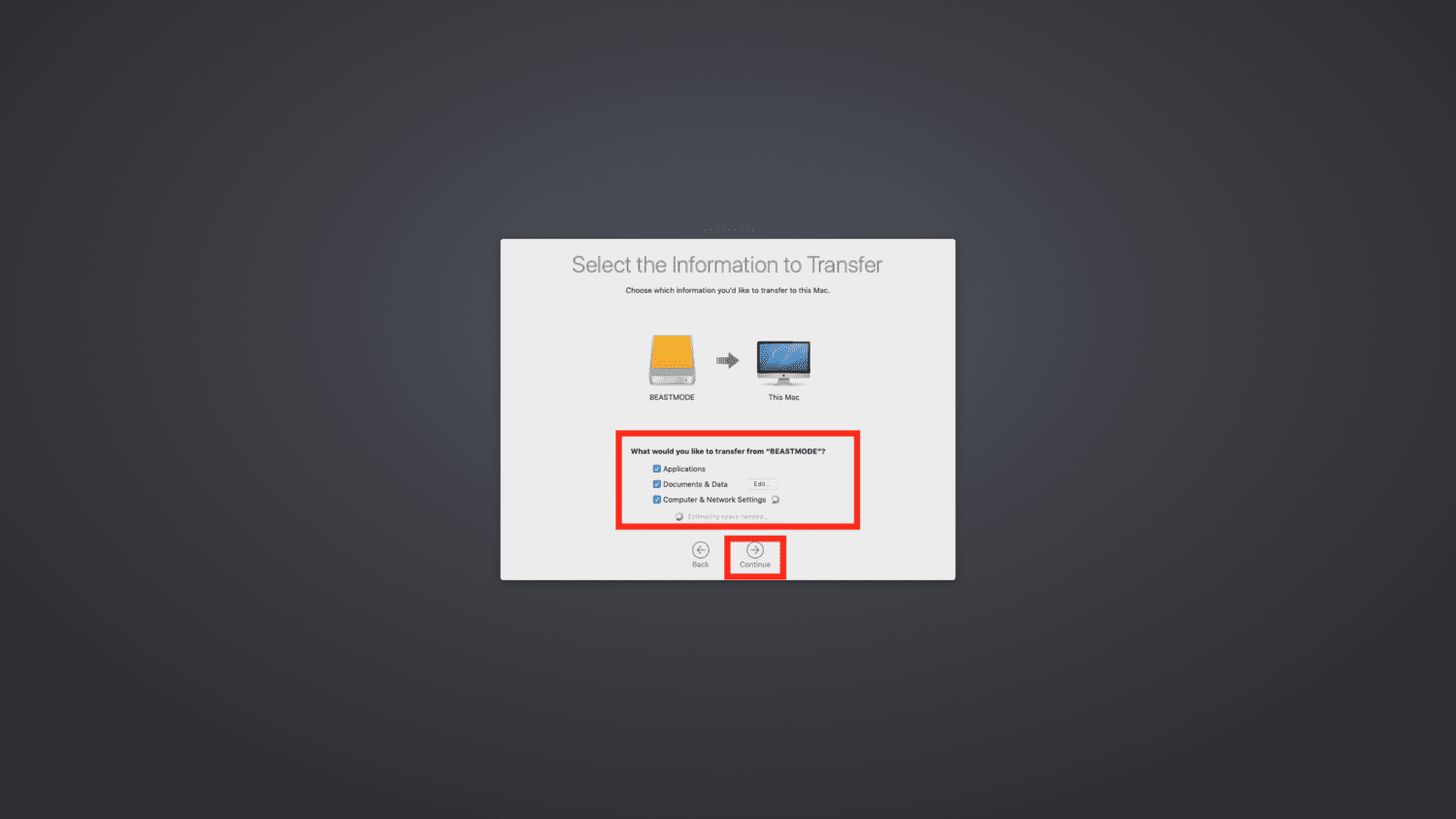
Please note it may take several hours to complete.
While there are many paid services and programs for backups out there, Windows and Mac both have easy-to-use programs and functions built into their operating systems. Regardless of what method you choose to back up your computer, just make sure to do so regularly or at the very least before any major changes to your system. If you’re using an external hard drive to store your backups, do keep it in a safe place so you have a copy of your digital ‘life’ no matter what happens.
Tell us: What is your backup strategy? Are you regularly backing up data, or was this article a good reminder to back up your data now?
Related:
- How to determine how much storage is needed to back up your computer
- How to backup photos the right way


